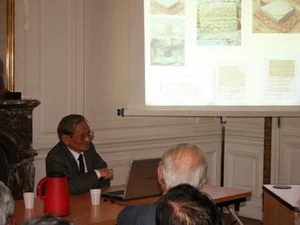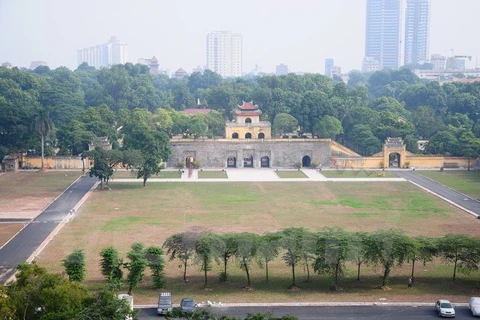Hanoi, (VNA) – Archeologists have found traces of large-scale architectures dating back from the Tran dynasty (1225-1400) at the Thang Long Royal Citadel.
The clearest vestiges are lemon flower flooring and brick walls, the archeologists revealed at a conference in Hanoi on December 14 to review outcomes of an excavation at the Kinh Thien Palace relic in 2015.
The excavation further identified structure and scale of architectural traces from the Ly dynasty (1009-1225).
Accordingly, the structure of the large water drainage system, which was unearthed in 2012, is much more complicated than expected, the archeologists said, adding the two newly-discovered pillar bases prove the presence of large-scale architectures outside the drainage system.
During the excavation, the scientists also made it clear architectural structures of houses under the Le So period ( 1428-1528) and the Le Trung Hung period ( 1533-1789).
The excavation was jointly carried out by the Thang Long Ancient Citadel Preservation Centre and the Institute of Archaeology on a site of nearly 1,000 sq.m in an effort to study the architecture of the Kinh Thien Palace.
The place sits in the centre of the Thang Long Royal Citadel. Built in 1428, it is believed that it was the most important building and hosted many royal ceremonies.
The citadel was built in the 11th century during the Ly Dynasty to mark the independence of Dai Viet, the former name of Vietnam. The central sector of the imperial citadel was listed in UNESCO's World Heritage Site on July 31, 2010.-VNA






















